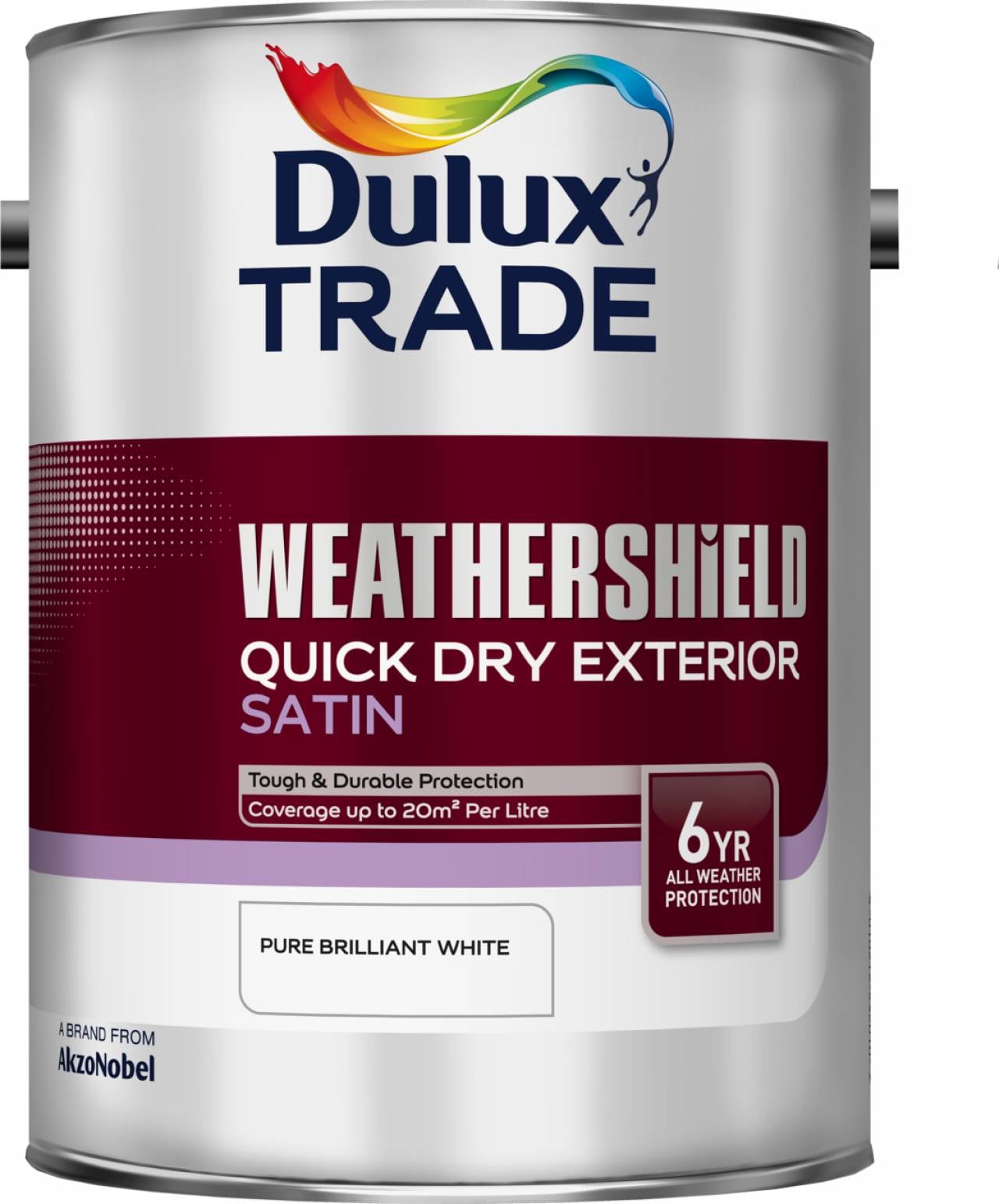Good to see you!
Welcome to Dulux
Terms & Conditions
Registration complete
Successfully registered, please login
Registration complete
Forgotten your password?
Please enter email address associated to your account
Change Password
Password changed successfully.
Request sent!
Delete Account

Weathershield Quick Drying Satin
-
Finish Satin
-
Coverage Up to 20m2/litre
-
Drying Time Touch Dry: 1-2 hours dependent upon
Re-coatable: temperature / humidity2-4 hours -
Coats 2
-
QUICK DRYING
-
WEATHERPROOF
-
HARDWEARING
Product Description
Contains fungicide to prevent mould growth.
Application Description
Health & Safety
Tips & Advice
-
1. Preparing the SurfacesSurfaces must be sound, clean and dry before treating.
Remove all loose and defective coatings, if necessary stripping back to bare wood.
Prime all bare wood with 1 coat of Weathershield Exterior Preservative Primer including any new or bare replacement beading. Excess primer should be wiped off surrounding paintwork. Prime any bare metal with 1 coat of Dulux Trade Metal Primer.
Apply 1 coat of the appropriate coloured Dulux Weathershield Quick Dry Exterior Undercoat to all primed wood.
Apply a second coat of Dulux Weathershield Quick Dry Exterior Undercoat overall, followed by 1 coat of Weathershield Exterior Quick Drying Satin. Where a strong colour change is involved, 2 coats may be required. Allow a minimum of 2 hours before overcoating Dulux Weathershield Quick Dry Exterior Undercoat.
After use, remove as much paint as possible from brushes before cleaning with clean water. -
2. After useCleaning After Final Use- Cleaning your brushes and rollers immediately after their final use ensures they can be reused for multiple projects, saving you money and reducing waste. Cleaning- 1. Remove Excess Paint- Scrape off excess paint into container for future projects. 2. Use Paint Thinner- Use a paint thinner to clean brushes and rollers. 3. Reuse Paint Thinner- Allow the paint solids to settle and reuse the thinner by pouring the clear liquid into another container. Responsible Disposal- Dispose of the remaining solids and used thinner at a hazardous waste facility. Do not pour any solvent-based paint, paint thinner or wash water down the drain or onto the ground. Do not flush paint down the drain, including when cleaning painting tools
-
3. StoringStoring & Responsible Disposal- Do not use or store paint in extreme temperatures and protect from damp & frost. Reuse, Recycle, or Donate- Whenever possible, reuse, recycle, or donate leftover paint. Find local services at mywaste.ie or consider advertising paint locally—many good causes need it to brighten community spaces. Dispose Responsibly- Never pour paint or wastewater down drains or sinks. Follow instructions at mywaste.ie to recycle empty packs. Reuse Roller Cages- Remove sleeves and store cages in a dry, dust-free place. Dispose of Unusable Brushes and Sleeves- If brushes or sleeves cannot be cleaned or reused, dispose of them in general waste to avoid recycling issues. Paint Wash Water- Collect wash water in a container; don’t pour it into drains or on the ground. Let solids settle, pour off clear water for reuse or disposal, and let solids dry before disposing as solid waste. Do not flush paint down drains, including when cleaning tools.
How much paint do I need?
Measure the height and length of the surface you want to paint (in metres or centimetres).


Your Measurements:
{{!-- This value will be injected with JavaScript --}}
Amount needed:
{{!-- This value will be injected with JavaScript --}}
Actual coverage will depend on the conditions of the surface. If the colour change is strong, more coats may be required.
Add a new job
Add a new job
Edit a job
Delete job
Are you sure? All notes, photos and saved items will be deleted.
Save colour
Save to My Workspace
Save product

Weathershield Quick Drying Satin
Save job